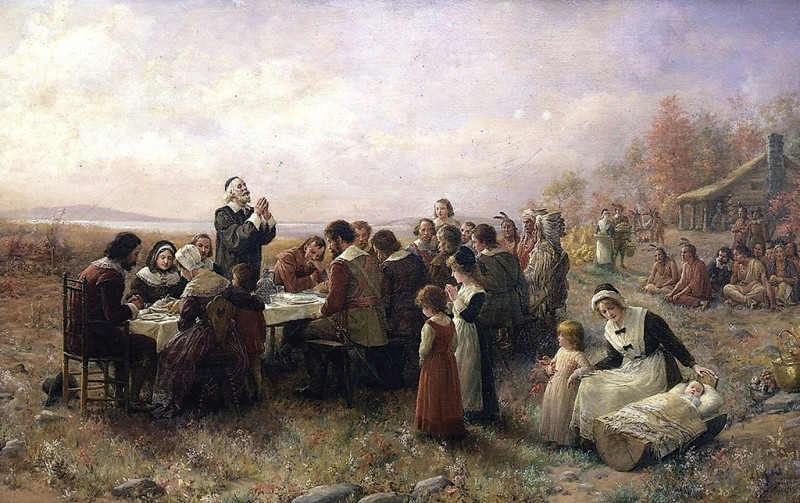By Becky Cairns
Many of our stereotypes about the feast and its attendees come from artists’ renderings of the event, painted long after the 1621 event was over, says a Brigham Young University historian.
“The images often tell you more about the time they are created than the time they actually are depicting,” says associate professor of history Jenny Pulsipher.
Take, for instance, a popular painting of the First Thanksgiving, done in 1915 by Jean Louis Gerome Ferris, an American painter. The art—like many pieces that portray this event—depicts the Indians wearing elaborate feathered headdresses common to tribes who lived on the Plains, not in Massachusetts.
“In the early 20th century, people thought that all Indians looked like Plains Indians,” Pulsipher says. Folks tended to assume “all Indians are the same when really Indians are just as diverse as Europeans are,” she adds.
The Ferris painting also shows the natives without shirts, but Pulsipher says, “They wouldn’t have been half-naked, either, because this is November and it’s cold.”
The Wampanoag are shown sitting on the ground in the artwork, with a Pilgrim woman handing them food. At the time the painting was done, many Americans considered native peoples uncivilized—“so you have to feed them on the ground,” Pulsipher says.
“Obviously, it’s implying that the ones who are standing are superior,” she adds.
A modern painting of the First Thanksgiving would be more apt to feature both groups sitting at a table, the professor says, or both groups sitting together on the ground. The Pilgrims and Wampanoag enjoyed a cooperative relationship at the time, Pulsipher says—“not one people dominating over another.”
The point is to look at such works critically. Maybe they're accurate, maybe not. You won't know unless you question them rather than accepting them blindly.
For more on Thanksgiving, see Drink's "Sexy Pilgrim & Indian Party" and Thanksgiving in Up All Night.
Below: "The First Thanksgiving at Plymouth, by Jennie A. Brownscombe. Notice that the Indians are in the background of the painting, which was created in 1914."


No comments:
Post a Comment